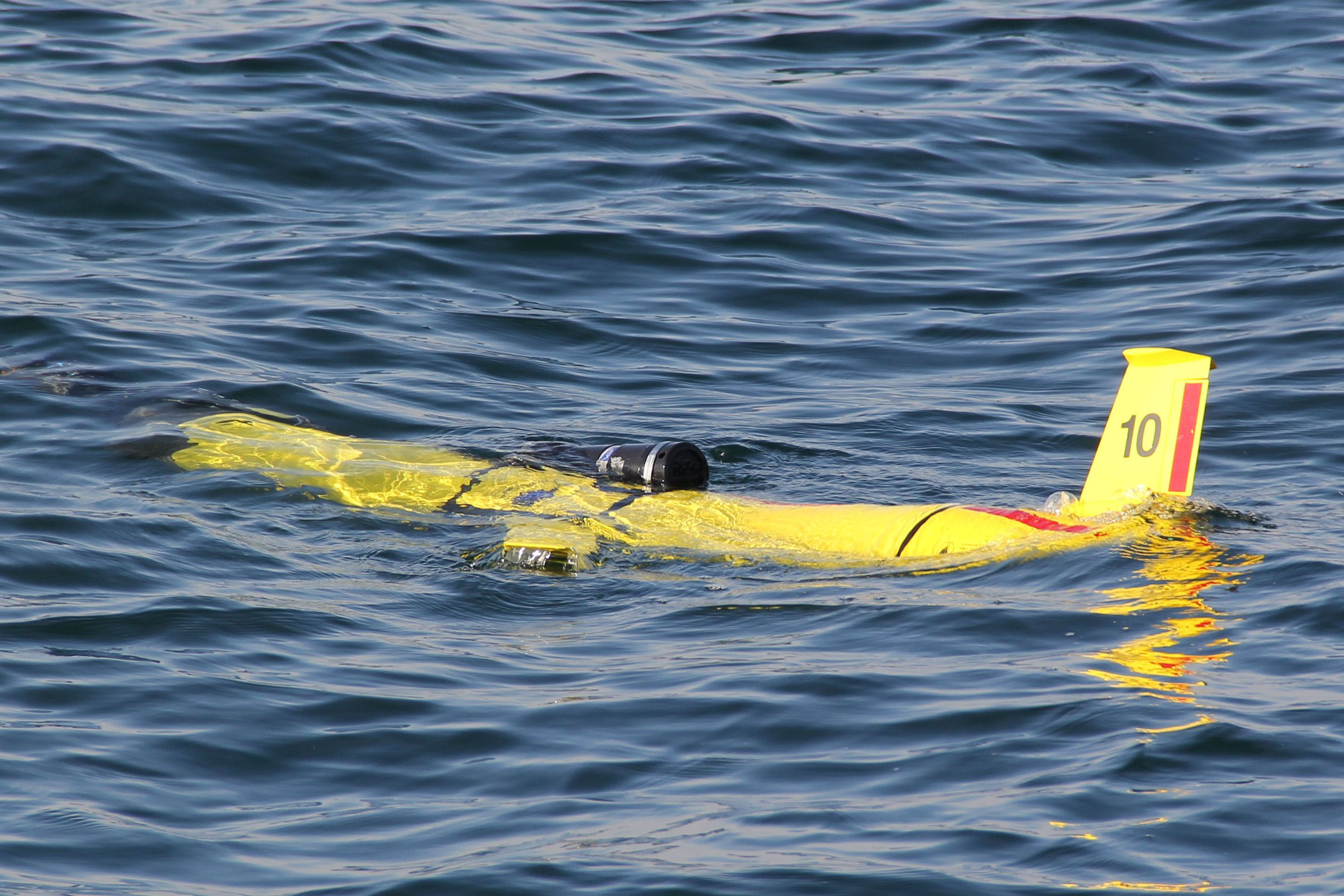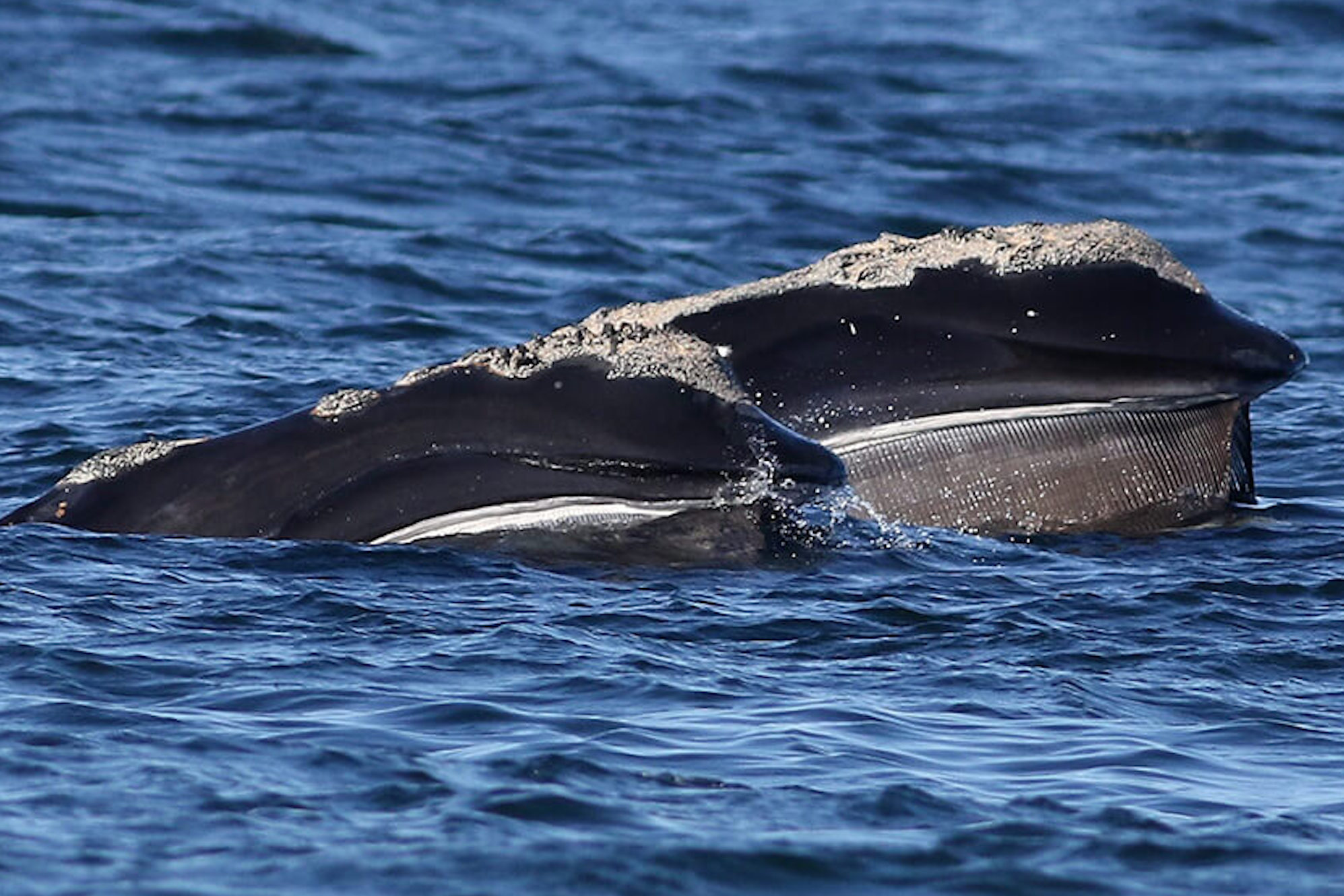Stellwagen Bank National Marine Sanctuary
What did we hear?
Click the icons in the scene below to listen and learn about the sounds we recorded in this sanctuary.
Where did we listen?
Here is a map of listening device locations. Hover on a location to see its site id and click on it to see the rationale for its placement.
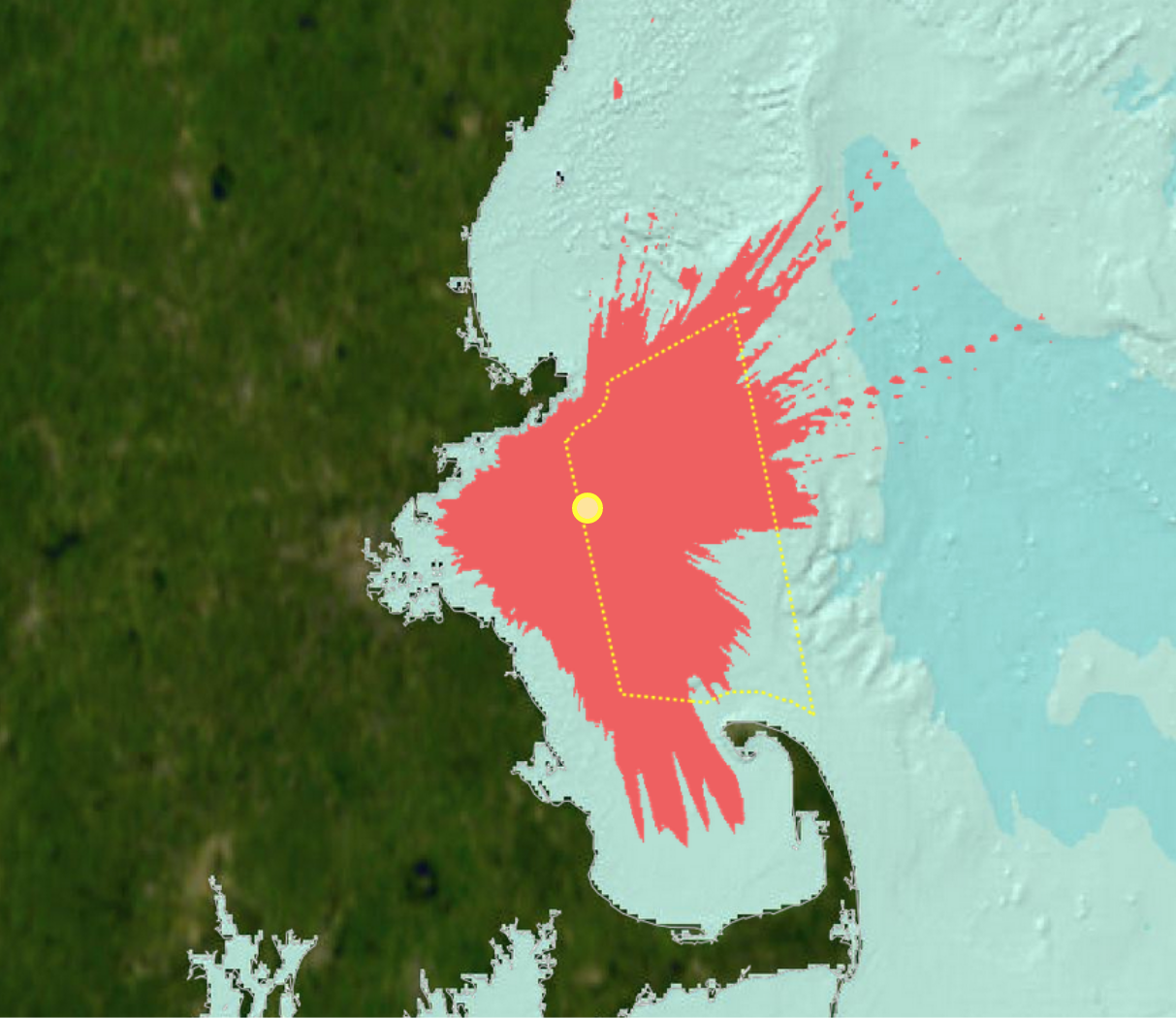
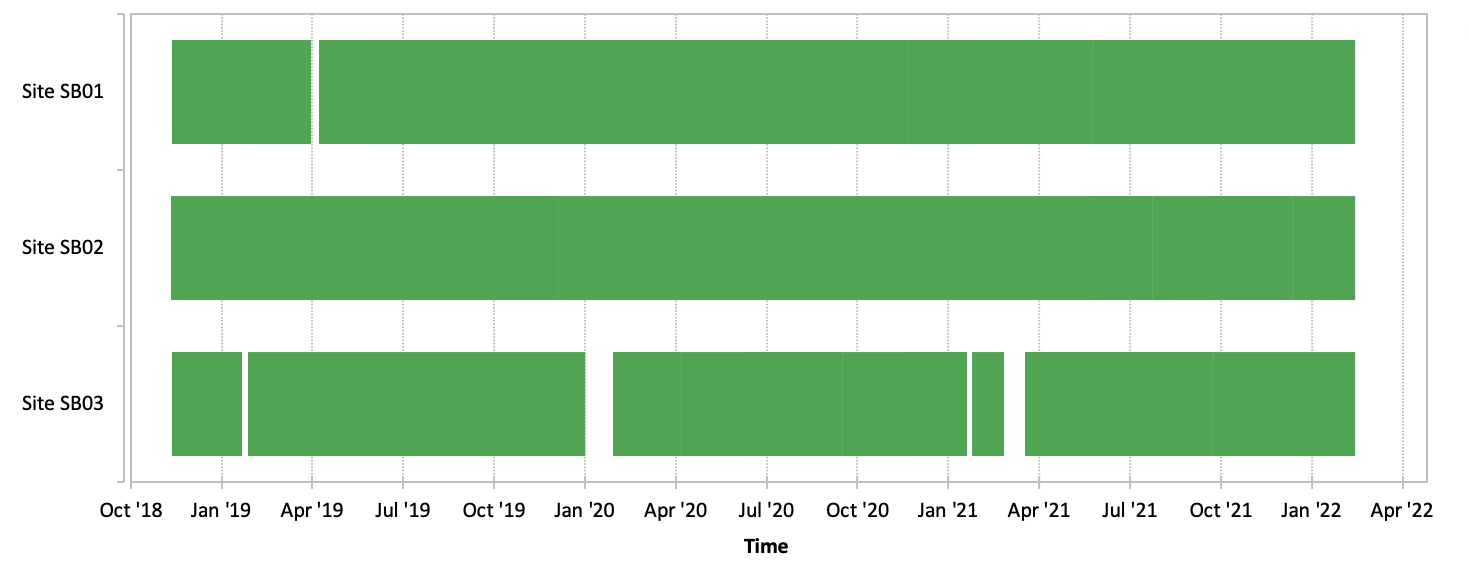
Learn more about how we
listened to and recorded
soundscapes.
See similar maps
of the listening range for the other hydrophones in this
and in other sanctuaries.
What did we measure?
Spectrogram: intensity of sound at different pitches over time

This example spectrogram from a listening station east of Boston, MA in Stellwagen Bank sanctuary shows that sound levels were louder (warmer colors) at low and medium pitches and quieter (cooler colors) at much higher pitches, reflecting near-continuous contributions of vessel traffic and weather associated sound to this human activity and weather driven soundscape. Some episodic increases at low frequencies correspond to marine mammal vocal activity but are largely obscured by these other sound sources. Information about the quality of the sound data is included along the bottom of the plot with green indicating time periods of good quality data and data gaps shown with white.
Sound levels above median: loudness and contribution of different pitches
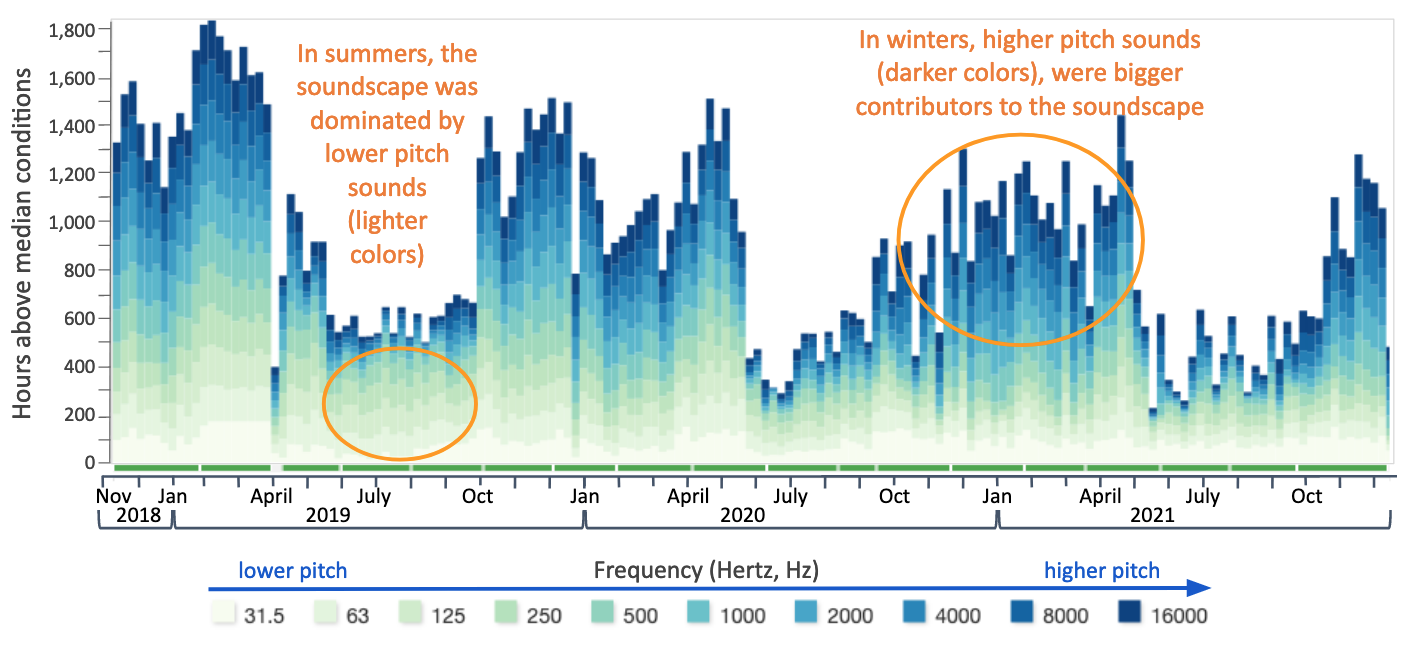
This histogram of above-median sound levels for a listening station east of Boston, MA in Stellwagen Bank sanctuary shows inter-annual variability in the soundscape, with increases in overall sound levels across all pitches in fall through spring due to the increased prevalence of wind and storm related sound combined with near-continous presence of vessel sound throughout the year. Data quality is shown in color as described above.
Power spectrum: variability of loudness across pitch
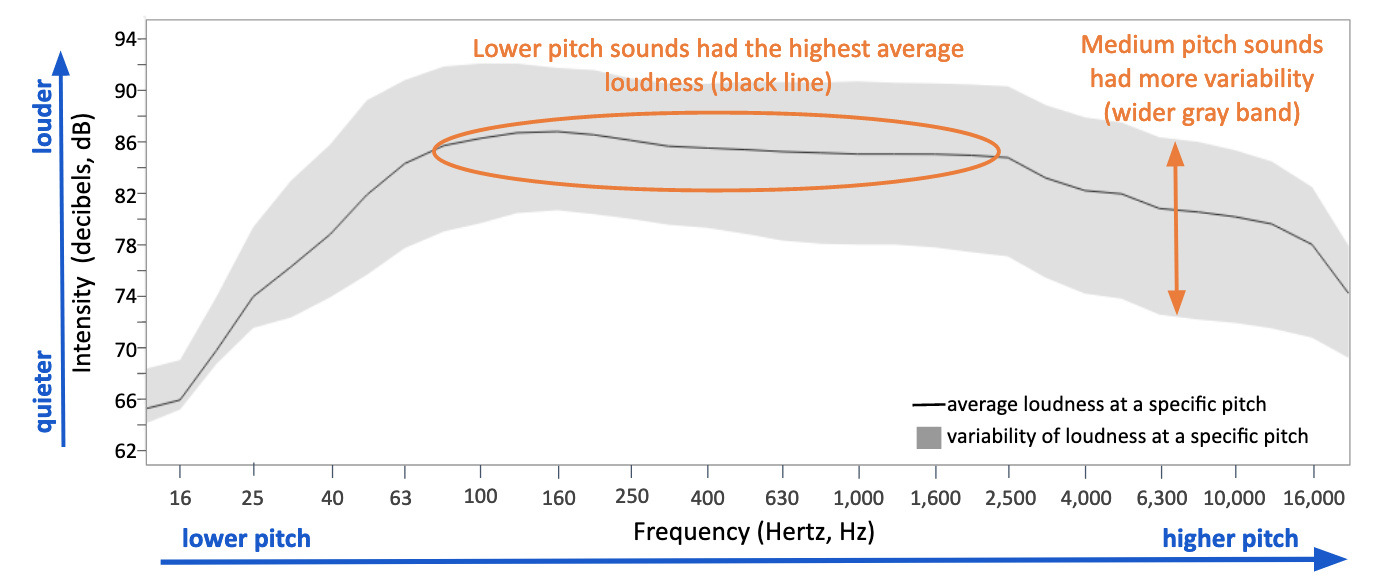
This power spectrum plot for a listening site east of Boston, MA in Stellwagen Bank sanctuary shows that low to medium pitched sounds (63-2,500 Hertz) had the highest median intensities (black line) compared to other pitches. Across all pitches, sound levels were highly variable (wide gray band) due to weather events, vessel presence, and marine mammal vocal activity.
Anomaly plot: deviation of loudness from average

This sound levels anomaly plot for a listening site east of Boston, MA in Stellwagen Bank sanctuary shows the same inter-annual variation seen in the histogram but more clearly identifies broad periods of increased sound levels across all pitches in fall through spring associated with wind and storm conditions and ongoing vessel activity. Some episodic increases at low frequencies correspond to marine mammal vocal activity but are largely obscured by these other sound sources. During summer months, storm related sound is mimized allowing for vessel and marine mammal activity to be more visible in lower pitches. Data quality is shown in color as described above.
Learn more about what we measured and how to read and understand these summary graphs.
See similar summary graphs for the other stations in this sanctuary and here for data available in other sanctuaries.

